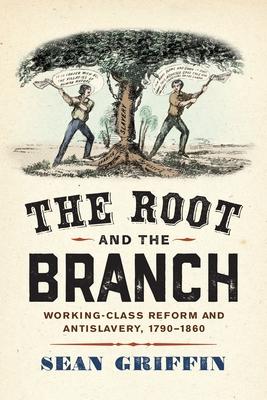The Root and the Branch examines the relationship between the early labor movement and the crusade to abolish slavery between the early national period and the Civil War. Tracing the parallel rise of antislavery movements with working-class demands for economic equality, access to the soil, and the right to the fruits of labor, Sean Griffin shows how labor reformers and radicals contributed to the antislavery project, from the development of free labor ideology to the Republican Party's adoption of working-class land reform in the Homestead Act. By pioneering an antislavery politics based on an appeal to the self-interest of ordinary voters and promoting a radical vision of "free soil" and "free labor" that challenged liberal understandings of property rights and freedom of contract, labor reformers helped to birth a mass politics of antislavery that hastened the conflict with the Slave Power, while pointing the way toward future struggles over the meaning of free labor in the post-Emancipation United States.
Bridging the gap between the histories of abolitionism, capitalism and slavery, and the origins of the Civil War, The Root and the Branch recovers a long-overlooked story of cooperation and coalition-building between labor reformers and abolitionists and unearths new evidence about the contributions of artisan reformers, transatlantic radicals, free Black activists, and ordinary working men and women to the development of antislavery politics. Based on painstaking archival research, The Root and the Branch addresses timely questions surrounding the relationships between slavery, antislavery, race, labor, and capitalism in the early United States.
The Root and the Branch: Working-Class Reform and Antislavery, 1790-1860
The Root and the Branch examines the relationship between the early labor movement and the crusade to abolish slavery between the early national period and the Civil War. Tracing the parallel rise of antislavery movements with working-class demands for economic equality, access to the soil, and the right to the fruits of labor, Sean Griffin shows how labor reformers and radicals contributed to the antislavery project, from the development of free labor ideology to the Republican Party's adoption of working-class land reform in the Homestead Act. By pioneering an antislavery politics based on an appeal to the self-interest of ordinary voters and promoting a radical vision of "free soil" and "free labor" that challenged liberal understandings of property rights and freedom of contract, labor reformers helped to birth a mass politics of antislavery that hastened the conflict with the Slave Power, while pointing the way toward future struggles over the meaning of free labor in the post-Emancipation United States.
Bridging the gap between the histories of abolitionism, capitalism and slavery, and the origins of the Civil War, The Root and the Branch recovers a long-overlooked story of cooperation and coalition-building between labor reformers and abolitionists and unearths new evidence about the contributions of artisan reformers, transatlantic radicals, free Black activists, and ordinary working men and women to the development of antislavery politics. Based on painstaking archival research, The Root and the Branch addresses timely questions surrounding the relationships between slavery, antislavery, race, labor, and capitalism in the early United States.